The Hellbender is the largest amphibian in North America. It reaches impressive lengths of up to 29 in. long. This unique species is also known as the Hellbender salamander. Sadly, their populations are currently declining due to human activity. Read on to learn about the Hellbender.
Description of the Hellbender
If you meet an adult Hellbender, and you can actually spot it, you will not have difficulty distinguishing it from other salamander species. Outside of their impressive size, you will also notice their wrinkly skin and flattened bodies.
Adults of this species typically measure between one and two feet long, though some individuals grow several inches longer. Depending on its size, this amphibian weighs between two and five pounds.
Interesting Facts About the Hellbender
This prehistoric-looking creature is certainly an imposing animal. Learn more about what makes these massive amphibians so interesting, below.
- Minimal Eyesight – If you look closely at a Hellbender’s face, you will not be surprised when I tell you that they have very poor eyesight. Their eyes are incredibly small, and virtually useless to them while hunting.
- Sensory Hunters – So if you can’t see, how do you hunt? Well, these large salamanders utilize special pores on their faces. These sensory pores let the animal detect minute vibrations in the water around them. This means that they can “see” a crayfish crawling along the bottom just by the movements it makes.
- Tight Squeeze – At a glance, you’ll also notice that this amphibian looks rather like someone sat on it and flattened it. This body shape is known as “dorsoventrally flattened.” This shape might look funny, but it allows the salamanders to squeeze under rocks in pursuit of prey or while escaping predators.
- Wrinkles and Ridges – The wrinkly loose skin of this species is yet another adaptation. When you try to wedge yourself into a small space, it helps if your skin has some give to it. The loose wrinkly skin doesn’t tear when the animal pulls itself into tight openings, it just pulls one direction or the other.
Habitat of the Hellbender
Unlike some salamanders, and many other amphibians, these animals never leave the water. They live fully aquatic lives. In their aquatic habitats, they prefer clean, flowing water with plenty of oxygen.
Areas with gravel bottoms and an abundance of rocks and submerged logs are particular favorites. You can find these amphibians at sea level and in mountainous streams and creeks.
Distribution of the Hellbender
This species lives exclusively in the Appalachian Mountain Range. Its range extends from New York to northern Georgia, Alabama, and Mississippi. The westernmost extent of its range stretches into Illinois, Kentucky, and Tennessee. One subspecies also lives in the Ozarks region of Arkansas and Missouri.
Diet of the Hellbender
The diet of this creature depends on its age. Younger individuals do not have the size that adults do, and thus cannot hunt for prey as large as their adult counterparts.
While young, these carnivores hunt for insects, insect larvae, tadpoles, and even small fish. Adults primarily hunt for crayfish, but they also eat all the previously mentioned prey of the younger individuals.
Hellbender and Human Interaction
Sadly, this impressive species faces direct threat from human activity. The IUCN lists the Hellbender as Near Threatened. Habitat destruction does the most damage to these creatures. They must have flowing water to survive, because moving water has higher oxygen levels and the salamanders “breathe” through their skin.
Their need to obtain oxygen through their skin is also why they are so sensitive to pollution. The introduction of chemicals and pesticides to the water can kill eggs, larvae, and even adults.
Domestication
Humans have not domesticated these creatures in any way.
Does the Hellbender Make a Good Pet
No, this amphibian does not make a good pet. Additionally, because its population is in decline, it is illegal to own this animal as a pet.
Hellbender Care
Many different zoos and aquariums house Hellbenders. These captive populations are incredibly important for maintaining the population should those in the wild continue to decline. They also make for a wonderful educational tool to teach the public about the consequences of habitat destruction and pollution.
Animals in zoos and aquariums live in carefully regulated enclosures. Their water quality is kept at a constant temperature and oxygen level. Zookeepers feed them worms, shrimp, brine, crickets, small fish, crayfish, and more.
Behavior of the Hellbender
This amphibian lives a solitary life. It maintains a territory, and protects its territory from other members of its species. During the daytime it hides from predators beneath rocks or under submerged logs.
It is nocturnal, but most hunting occurs during the early morning and late evening. As the breeding season arrives, they leave their territory to search for a mate.
Reproduction of the Hellbender
Males dig out a shallow burrow for a female to lay her eggs, then they attempt to attract females to their nesting site. If the female chooses the male, she will lay her eggs in the nest, and then he will fertilize them. A single clutch can contain up to 450 eggs.
Once she lays the eggs, the male chases the female away and proceeds to guard the eggs from any intruders. It takes about 2 months for the eggs to hatch. Once the larval young emerge, the male no longer guards the nest.


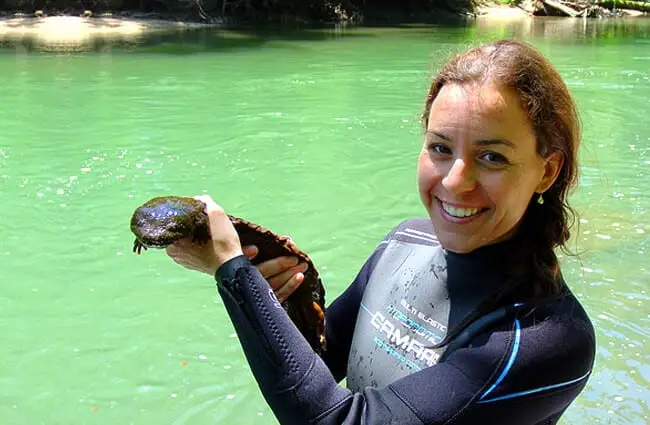
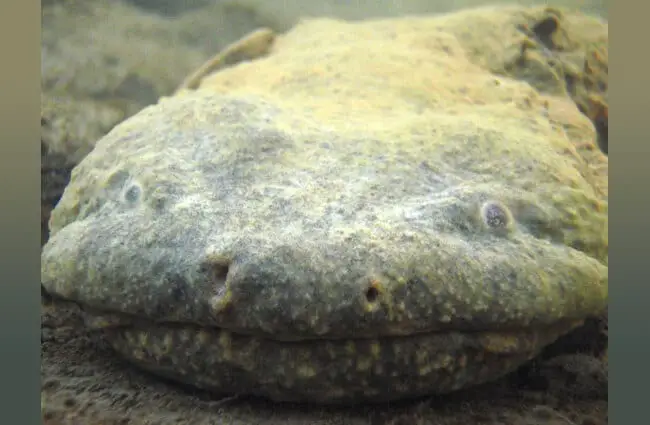
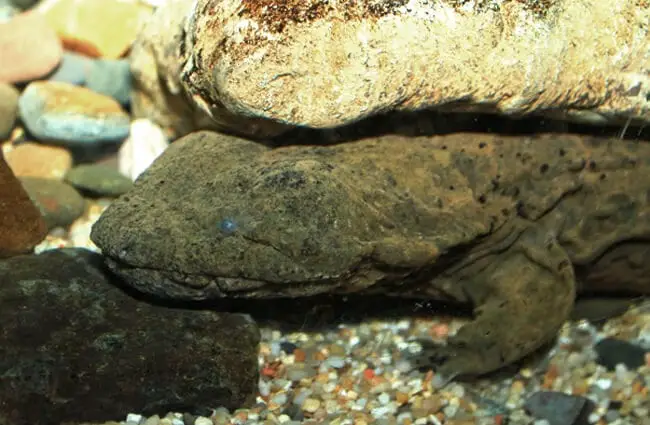

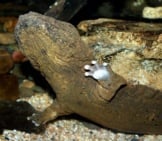

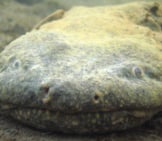
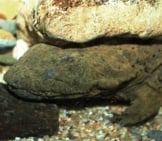

![Red Angus Closeup of a beautiful Red Angus cowPhoto by: U.S. Department of Agriculture [pubic domain]https://creativecommons.org/licenses/by/2.0/](https://animals.net/wp-content/uploads/2020/03/Red-Angus-4-238x178.jpg)












![Red Angus Closeup of a beautiful Red Angus cowPhoto by: U.S. Department of Agriculture [pubic domain]https://creativecommons.org/licenses/by/2.0/](https://animals.net/wp-content/uploads/2020/03/Red-Angus-4-100x75.jpg)

